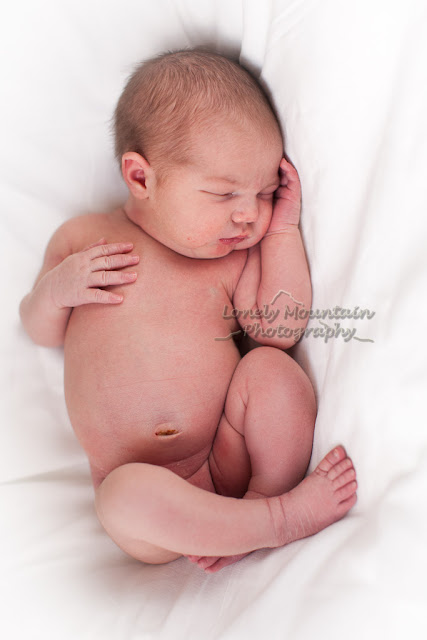Both are taken in pretty much the same location, though at different times of day and she is turned a different direction in each.
In the first, she is facing the large bank of windows on one side of our living area. Notice how her face is all lit up, the light is mostly touching her right side with shadows next to her nose and on her left side, and there is a nice catch-light in the upper part of each iris. We want these shadows, as they give the face shape. This is close to "Rembrandt" style lighting, with mostly only one side of the face lit and a triangle of light on the other cheek.
Notice, however, that her hair is dark. There is no light coming from behind.
The other thing I want to point out is the lens choice and aperture used here. I am using a 50mm lens ("normal" lens) with an aperture of f/2. The aperture of f/2 provides the shallow depth of field. While she is pretty much the same size (as the second photo) relative to the frame of the photo, notice that her arms and nose actually look a bit larger!
Here is the other photo:
It is actually the same baby! Here I used a 135mm focal length lens, with an aperture of f/4.0. Both photos have nice blurring in the back and fore-ground, due to a shallow depth of field for that lens. But I was physically closer to the baby when I used the 50mm lens, so those parts of the scene closer to me look a little distorted - they look bigger.
Back to light: In the second photo she is back-lit by the same windows providing light in the first photo, and some light falls on the left side of her face. I had to over-expose the scene in order for her face to be bright enough, and her eyes don't have the nice catch-lights (sparkle). However, since the light is coming from behind, her head does have a nice rim-light, giving a sense of separation from the background, and giving a lightness to her hair.
You might also notice the patch of very bright light on her seat from the little bit of direct sunlight hitting her. This ended up being way over exposed in order to light the baby up, so we see what is called "clipping" - the patch of light is so bright we've lost all detail in that spot. (she is also wearing a large cloth diaper)
I prefer the 135mm lens for this photo, so her features aren't distorted. I also like the back-lighting. If we wanted to combine the best of both we could move her out of the patch of sunlight and use a light or reflector in front and above her slightly to get better lighting.










